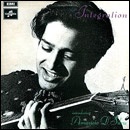| AMANCIO D'SILVA |
|---|

|
For the Amancio D’Silva official website see: www.amanciodsilva.com
For more info. on Amancio D’Silva, including free music downloads click here.
Contents:
1. Obituary. The Guardian (London) September 13, 1996 Pg. 16.
2. Amancio D'Silva 'Integration' Universal. Time Out (London). 28 July 2004. Pg.100
3. A personal tribute by Michael Costa Correa.
4. Hearing the Konkan Dance from Amancio D'Silva's guitar
September 13, 1996 Pg. 16.
OBITUARY: JAZZ'S INDIAN HEART: Amancio D'Silva
By: Chukwunyere Kamalu
Text: AMANCIO D'SILVA, who has died aged 60, was a distinctive virtuoso jazz guitarist and composer.Between 1969 and 1972, a series of important recordings, built mainly around his own early compositions, were released, including collaborations with Joe Harriot (Hum Dono, 1969), Stan Tracey (Reflections, 1971) and other leading British jazz musicians.
Amancio's musical family came from Goa and his music reflected the influences of his Indian background. He grew up in Bombay, where there was a lively jazz scene, and taught himself to play jazz as a teenager. He gained such a reputation that the then Maharani of Jaipur, an ardent jazz lover, became his benefactor and bought him his first decent guitar (a Gibson). D'Silva listened and learned from jazz played on Voice of America. Charlie Christian and Wes Montgomery were among his early influences. During this period D'Silva met and married his Irish wife, Joyce, who was teaching in Simla. When, in 1967, one of their three children, Stephano, became ill soon after birth, the family flew to Britain for his treatment and remained there after their son's recovery. Jonathan Miller soon introduced D'Silva to jazz producer Dennis Preston, who initiated the collaborations between D'Silva and leading British jazz musicians.
Following his retirement from performing, D'Silva taught first at Jenako Arts, in London's East End and later at the Krishnamurti International School in Hampshire. Many of his former students recall the profound influence he had both on their understanding of music and also on their personal lives.
A stroke in 1992 partially paralysed him and curtailed his teaching career. In an interview for Jazz Journal earlier this year, D'Silva made a telling observation on the direction of the New Jazz emerging in Britain. Although appreciative of the advanced technical skills of today's young players, he is not uncritical: "Technically today we are miles ahead, but . . . no feeling. Why do they have to go play jazz? Jazz is something from the heart."
Amancio was a vegan and committed to a holistic view of life. In accordance with his wishes, he was buried in a cardboard coffin in a woodland burial site near Brighton, where a mountain ash tree will be planted on his grave.
Amancio D'Silva, musician, born March 19, 1936; died July 17, 1996.
28 July 2004. Pg.100.
Amancio D'Silva 'Integration' Universal.
By John Lewis
This reissue is part of a fine strand of LPs from the Universal archive, smartly repackaged in the wake of Gilles Peterson's 'Impressed' compilations of vintage Brit-jazz rarities. The albums date from the late '60s and early '70s, when some high-ups at the major labels, emboldened by the success of prig rock and psychedelia, tried marketing jazz and improv to da kidz. Armed with a (relatively) expensive studio budget, the likes of Neil Ardley, Mike Westbrook, Mike Taylor and Michael Garrick seized the opportunity, making beautiful, oddly bucolic music, unencumbered by any American template or by the stultifying influence of academic jazz courses.
The biggest surprise in the pile is by Goan guitarist Amancio D'Silva.
He's not a name you'll find in any jazz reference books. He was a fan of Charlie Christian, he played for the jazz-loving Maharani of Goa, had an Irish wife, came to London in 1967 and was a lifelong vegan. He died in 1996, aged 60.This album was released in 1969, a few years after another AngloIndian musician,the late violinist John Mayer, had pioneered an approach to jazz using Indian modes and rhythms. D'Silva's playing is less cerebral than Mayer's but every bit as compelling, occasionally taking on a deliciously rough, surfy edge. The band (drummer Trevor Tomkins, bassist Dave Green, sax/trumpet pairing Don Rendell and Ian Carr) envelop him in a swirling, pulsating rhythmic backdrop as he reinvents jazz as a music forged in Bombay, not New Orleans. A revelation.
AMANCIO D'SILVA: A personal tribute by Michael Costa Correa
I remember the day in 1991 I was having a drink in a pub in central London with a friend. I could not help overhearing a group of young lads talking about music. 'That brilliant jazz guitarist must be from Brazil' said one. I had to find out more so I approached the group and soon we got chatting. I found out that the guitarist in question was a teacher of jazz and held classes in East London. I attended the very next session to find a class of some twenty dedicated jazz enthusiasts following the directions of this man who appeared to me to be not much older than fifty holding a Gibson producing music which sounded heavenly. The young group seemed spellbound. After the session I approached the man to introduce myself and was warmly greeted. I asked him which part of Brazil he came from at which he gave a hearty laugh, paused a while and said 'I am from Goa and my name is Amancio D'Silva.' He was clearly amused at seeing the expression on my face but was delighted to meet a fellow Goan eager to learn to play jazz. We talked for well over an hour that evening.
Subsequent to the meeting I attended the entire course but it was not long before we visited each others' homes. He was keen to meet my family, in particular, my children who at the time were studying music at school. He lived in Petersfield some two hours drive but that did not matter to me. I was determined to learn and he was happy to impart his vast knowledge of jazz.
This very unassuming man was truly a giant comparable with other great jazz musicians. From very humble beginning he rose to perform at royal courts in India and sealed his authority with performances in the west notably in London. Not so long ago I met John Eltheridge, probably the finest jazz guitarist in the UK, who told me that he used to listen to Amancio on stage with Joe Harriot aspiring to play like him. I've had conversations with Esmond Selvyn another great jazz guitarist who reminisced of the times he spent with Amancio and Ike Isaacs from Burma, author of many books on jazz and another world renowned player.
Amancio would never say much about himself, all that mattered to him was playing music. "You must create a mood and feel music, for without this your music will sound lifeless albeit technically acceptable" he would say to me. Most of his teaching was based on the theme that music must be like the gentle breeze that stirs the heart and mind of the listener, not a gust of wind that just fleets by. This belief stemmed from him being a self taught man which clearly afforded him the time to reflect on the essential elements that evoke appreciation and joy from the listener and excitement. Over the years I noted that he never taught scales or arpeggios etc. rather he would demonstrate on the guitar his approach to creating a mood. At first he would say to me that what I played had no effect on him, in other words, he was far from being spellbound. I worked hard, spent many hours thinking what I should do to create that elusive mood.
One day I received a call from Amancio to say that he was going to perform at a Charity Ball in the West End of London. He added 'bring your guitar for you will be playing with me'. I could feel my heart pounding. He ended the conversation by saying 'don't let me down'. I remember the sleepless nights I had after that conversation. I arrived at the hall and saw Amancio approaching me. The musicians were busy setting out the instruments and politely greeted me. I was handed some sheets of music which I realised were songs that I had played with Amancio during our sessions. I was at ease and felt fairly confident. We had played about three numbers when I noticed that Amancio was in some sort of discomfort. He turned to me and whispered that he was not feeling well and, could I assist him off the stage. Fortunately Joyce was on the scene immediately and between us we decided that we should take him home. A doctor was called who admitted him into the hospital. It was clear that all was not well.
I kept in touch with the family but two months later I got a call from Joyce and was told that Amancio had passed away.
The loss of a husband and a father is a blow to any family, but the loss of a man of Amancio's stature leaves only a vacuum in the lives of those who were fortunate to know him. I feel his presence every time I pick up the guitar as if he is ready to guide me in his own inimitable way.
Herald (Goa). June 11 2006
Hearing the Konkan Dance from Amancio D'Silva's guitar
by V. M. de Malar
It was raining heavily last week when I turned up the volume on Amancio D'Silva's 1972 album, Konkan Dance. The water cascaded in sheets, an unyielding thrum of raindrops contributing backdrop for a sinuous, swinging, highly descriptive guitar line paced by ruminative sax and insistent tabla. I was transfixed, literally unable to move, loath to break the aural spell. The room grew still, the opening track worked its way towards resolution over slightly more than ten heart-stopping minutes, fading away almost regretfully to leave only the rain drumming in my ears and an instant certitude that I'd been listening to music that belongs with the very best jazz albums I've ever heard, a seamlessly expert intuition of Indian tone, timbre and timing within the straight ahead combo format.
What is this music that blew my mind so thoroughly? It's the last album made by a pioneering Goan musician and genuine expressive genius who spent most of his convoluted musical career in London's open-eared music scene of the 60's and 70's. Amancio D'Silva was born in Bombay in 1936, and spent his early years shuttling between Goa and the city. An excellent Internet site ( www.amanciodsilva.com), maintained by his musician son Stephano, says that his early influences came from the Voice of America Jazz Hour, where he listened avidly to guitar players like Wes Montgomery and Jim Hall, and clearly paid a lot of attention to the likes of the peerless innovator John Coltrane. He also started to tinker with instruments, and made his own electric guitars.
The rest of the story involves serendipity and lots of hard work. D'Silva gigged all over India, met his Irish-born wife while at work at the Raj-era Davico's in Simla, and embarked on a comfortable career as palace band-leader for Jaipur's Gayatri Devi, the Maharani bought him his first world-class instrument. But then the young Goan-Irish couple's second child (this same Stephano) fell sick and required treatment in the UK – Gayatri Devi paid for the family to head to the U.K. and there they have remained. Like so many Goans who arrived in London in that period, life was a struggle against adverse conditions. But Amancio D'Silva had a few crucial breaks, the biggest of which was an encounter with a British music producer named Denis Preston. This is the man who is credited with inventing the now-overused term "fusion", who recorded many cutting-edge acts that went on to become famous.
D'Silva was paired with a brilliant recording engineer, Adrian Kerridge (the records sound fabulous, miles better than most contemporary albums), and encouraged to seek his own sound. The resulting output adds up to four albums – from the aptly named, eye-opening "Integration" to the wonderfully original (but then unreleased) 'Konkan Dance' that is on constant play in my house at the moment. It's hard to overstate how absolutely perfect this music sounds even to twenty-first century ears, how unselfconsciously and wholly Indian and Western at exactly the same time, how really rocking, seeking, resolving, exulting Amancio's music is. Like all great works of art, it feels elemental and rock-solid, as though it has always existed. In this, it carries strong reminders of the creative output of another Goan genius who now belongs to the world (and also weathered the 1960's in London) Francis Newton Souza.
Like Souza, whose paintings again surmounted previous records at last month's Sotheby's auction of Indian art in London, Amancio D'Silva created startlingly original art that comes from a highly sophisticated, extremely knowing synthesis of East and West. You might think that either man is a one-off, a chance blip in our still-divided cultural landscape, but you can't do that with both. Pair them together, and then it makes perfect sense. It's a Eureka moment; of course they would have to be Goan, of course their great art is a consequence of their (and our) mutual cultural reality. Sadly, there are more "of courses". Of course they never achieved the kind of recognition that they deserved in their own lifetimes, and of course most Goans still don't know and don't care that the likes of Amancio D'Silva once fearlessly broke down genres and barriers and traditions with the searing brilliance of true genius.
|
|
|
|
|
|
|
|


